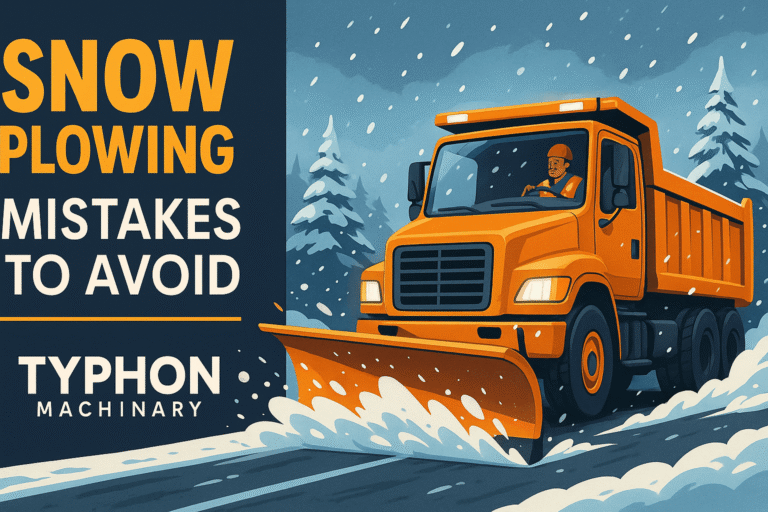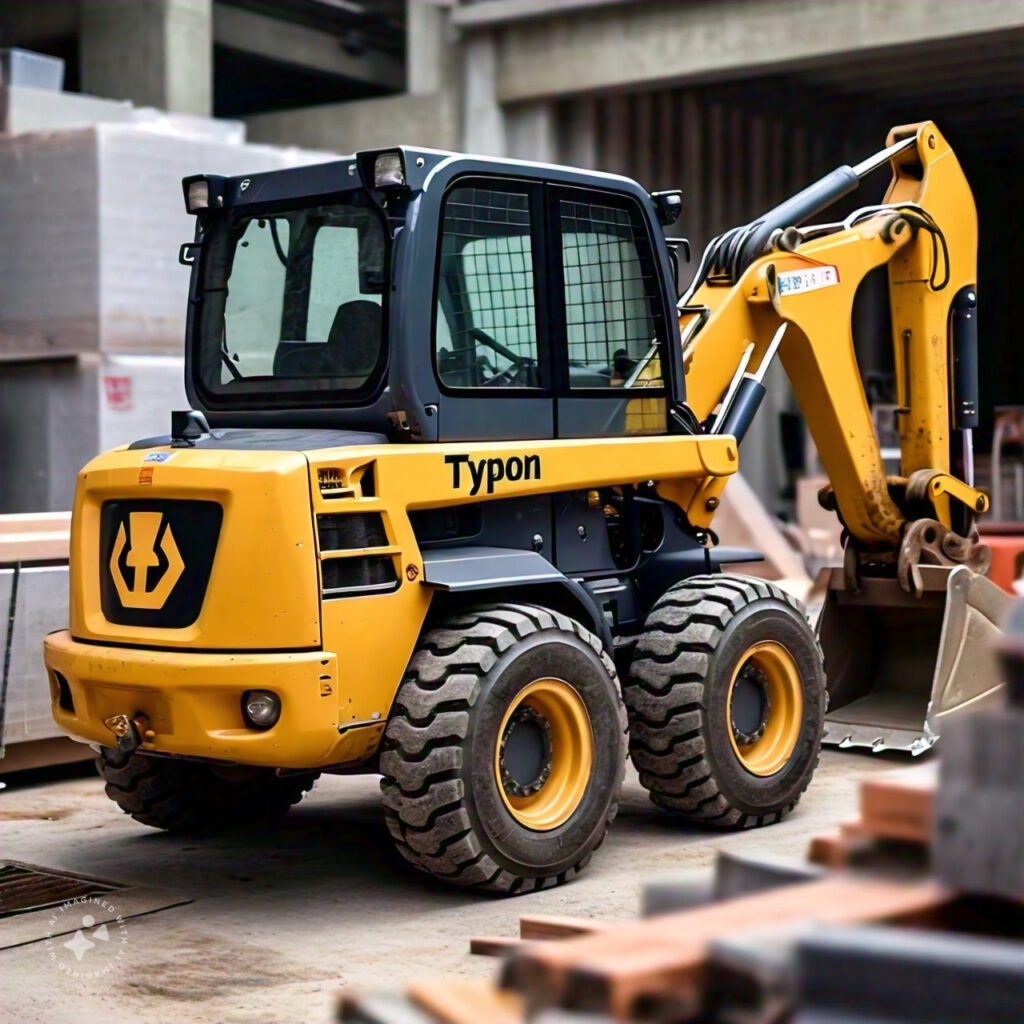Expert Guide for Safe Winter Operations
Do you have a plan to eliminate or reduce the risk of snowplowing hazards and, at the same time, guarantee the safety of your staff during winter operations? Ensuring a perfect and hassle-free snow removal operation is a result of knowing which are the essential mistakes to avoid. The winter is coming; knowing the outlined dangers can be of great help to you, not only in terms of money and time savings but also in preventing accidents.
In this guide, we will bring to light the critical snowplowing mistakes that even skilled operators do. We will discuss each mistake, such as an incorrect equipment inspection to the risky speed handling of vehicles, and provide solutions from professionals so that winter operations will not be an insurmountable task anymore.
This article is going to enable you to take the necessary steps. If you make use of these greatest insights that expose you to the unforeseen risks, you’ll be well-conversant with the same.
- Master the most important safety rules.
- Change the operation of the snowplow.
- Keep the unit in a good condition.
- Make the operations perform effectively.
- Limit liability risks.
Let us see what they are the game-changing insights that will alter the way you carry out your snow plowing.
Key Takeaways:
- Safety First: The safety of individuals and property is possible during snowplowing operations if the operator properly checks the equipment, controls speed, and use warning lights.
- Equipment Management: Timely equipment maintenance, accurate plow height adjustment, and proper plow shoes use are key factors for the snow removal machine to have a longer life span and to improve performance significantly.
- Property Considerations: Comprehending the correct snow pile location, keeping away from fire hydrants, and controlling high traffic areas are important tasks that a commercial property manager should deal with.
- Timing and Efficiency: Working during the hours the traffic is low, getting ready for multiple passes in a snowstorm, and ensuring no blockages are requirements that must be met for successful snow removal.
- Professional Best Practices: Adhering to the prescribed guidelines for deicing, keeping the right records, and setting the center of the operation are among the various measures that ensure the smooth winter operation in the industry.
Pre-Season Preparation and Equipment Inspection
Essential Equipment Checklist
Before evolving, the right equipment is the most important need of an effective snowplow operation. Besides making sure that your straight blade or V-plow is in top form, give the safety equipment a place on the list, including reflective clothing, emergency necessities, and communication gadgets.
Have the necessary tools at hand, such as:
- Ice scrapers and snow brushes
- Shovel for manual clearing
- First aid kit
- Emergency flares
- Tow straps
- Extra hydraulic fluid
- Basic repair tools
Vehicle and Plow System Inspection
Your vehicle and plow control system must be thoroughly checked as this is the most effective way to prevent any breakdowns in the middle of the job. Look for leaks or wear of hydraulic lines and ensure the plow mount is properly fixed. Try moving the blade in all four directions to guarantee the operation is smooth.
Here are some important things to be inspected in the item areas:
- Hydraulic fluid levels and condition
- Electrical connections and wiring
- Mounting brackets and pins
- Cutting edge wear
- Headlight and warning light functionality
- Tire pressure and condition
- Battery performance
- Windshield wipers and washer fluid
Do not forget to write down all inspections and maintenance activities. Thus, it will be easier for you to follow the history of equipment and detect potential problems before they become severe.
💡 Key Takeaway: Pre-season preparation and regular equipment inspection are both needed for good snow removal work. These basic actions will prevent breakdowns and make sure of safety in winter operations.
Safe Transportation and Vehicle Operation
Speed and Distance Guidelines
For plow transportation from one location to another, speed and distance should be kept at safe levels. To maintain proper vehicle control, always drive at a speed below 45 mph, even if the road is clear. Always wear your seatbelt – it’s not a mere requirement of safety, but a life-saving measure in the worst winter conditions.
Keep a wide distance from other vehicles on the road, especially during snowfall and this extra space will give you the time to react in case you need to brake or maneuver suddenly. It’s important that you lower your speed and concentrate on your lane position in case of oncoming traffic.
Visibility and Warning Systems
If drivers want to stay safe and maintain a good level of visibility while clearing snow, it goes without saying that they must keep lights of warning, strobe, and beacon on throughout transportation and plowing operations. These devices are a good way to let other drivers know of your existence and to avoid crashing, especially under poor weather conditions which limit visibility.
Have a close inspection of your mirrors, windows, and the entire lighting system from time to time, and remove dirt or snow as necessary to keep the full range of visibility. Ensure you have no blockage of vision by constant cleaning of snow and ice, and always make a point to get out of the car and clear it manually before resuming driving. In addition, with regard to your plow, verify that it is located rightly – bent to the right for straight types and completely drawn back for V-plows – to achieve both great visibility and control while traveling between locations.
💡 Key Takeaway: Safe and efficient plow transportation calls for strict observance of speed limits, incessant usage of warning systems, and constant vigilance over the traffic flow around, as well as keeping visibility clear and using safety restraints. All these combined constitute safety in plowing operations.
Surface-Specific Plowing Techniques
Different Surface Types and Adjustments
When employing diverse surfaces, proper snow removal without harm requires adjusting the equipment to the surface to be plowed. To remove dense snow on asphalt or concrete, decrease your plow shoe height. Avoid overscraping to avoid surface and equipment damage.
First, gravel road plowing is the most common and effective way to remove snow off unpaved roads because it melts snow and ice with ground heat and direct sunlight. Since direct sunshine is the primary source of energy for this melting process, it also affects the cost of snow-removal and ice-melting. In the unpaved region, lower the plow to avoid stones and position the blade slightly higher to keep the driver away from ground obstructions and clear any surface dirt. This step makes snow removal safe and simple, but the blade should be no more than one inch over the ground.
Managing Various Snow Conditions
various snow removal procedures are needed for various snow situations. Working on light, powdery snow is usually done quickly and without significant heaps. If the snow is wet and thick, slow down to minimize equipment strain and correct clearance.
When there is deep buildup, walk through the area again to be safe. This strategy prevents snow pack instability and may reduce the probability of becoming trapped. To guarantee avalanche safety and stability, keep the snow pile slope low.
To conclude, snow plowing performance depends on snow pile placement and slope. The piles must be off buildings, autos, or pedestrian paths, and the slopes should minimize collapses while maximizing space.
💡 Key Takeaway: The best way to plow is to be cautious about changing the plow – the height of the plow shoe is related, in the first place, to the type of substrate and snow conditions, and also the snow pile placement and slope arranged in compliance with safety and efficiency principles.
Property-Specific Considerations
High-Traffic Areas
High-traffic area snow removal standards must be understood by property managers, particularly commercial ones. Business parks, open-air workplaces, and medical institutions need frequent maintenance to avoid accidents and keep locations accessible.
People who utilize the main door, park, and stroll are most bothered during peak hours. Staff should be cleaning areas and maintaining parking lots during these times. Optimal plowing hours must be implemented to minimize business disruptions and ensure safety. It is also possible to separate a snow storage area from passersby, reducing damage and improving visibility.
Critical Service Access
When it comes to the removal of snow, routes and access points to services critical for health care need to be given the most priority during the operation. This is especially the case with health care facilities where ambulance access and patient drop-off points must be kept clear all the time.
Keep the paths to utility areas, fire hydrants, and emergency exits free from snow. Make a map that identifies these main areas, and make sure that your snow removal team is aware of their importance. Regularly rechecking and cleaning of these areas will prevent any accumulated snow from blocking essential services.
💡 Key Takeaway: A successful procedure of snow removal necessitates the careful selection of the high-traffic zones and the critical access points, notably, in healthcare and office settings, to ensure safety and prevent any disruptions to the main services.
Weather Monitoring and Storm Response
Storm Preparation Strategies
Effective winter weather inspection is crucial to optimizing snow removal. First, utilize various weather sources to predict winter storms. Now you can anticipate when the next blizzard will hit, allowing for better resource planning.
Draw the storm response plan that splits the activities needed for each winter weather scenario. You should have most of your equipment and materials in place before the storm. A ready fleet and well-planned material placement may save reaction time.
Set up clear team communication. Weather alerts and monitoring systems can keep everyone informed about weather changes. This ensures that your personnel are always ready to act without disorder whenever needed.
Create a soil temperature and rainfall tracking mechanism. These criteria largely determine how much material and weather modifications you must make to your snowplowing operations throughout winter weather events.
💡 Key Takeaway: The efficiency of snow plowing depends on awareness of the weather, early storm preparation, and the existence of clear communication channels with the team so that they make a timely and efficient response to the whole process.
Commercial Snow Removal Best Practices
Professional Service Standards
Professionalism is a key factor in snowplowing operations, as the delivery of reliable and effective services largely depends on it. A company that has a good reputation for snow removal knows the importance of commercial properties, which are the most suitable places for the service given.
For the sake of clarity, a professional snow removal company should present their experience in the field of commercial properties, thanks to their organized and systematic processes. This means elaborate snow management concepts, utilization of the latest machines, and regularly contacting and updating the managers of the properties.
First-rate commercial snow removal activities are based on regulations, the following being the most common:
- Regularly conducting equipment maintenance and inspections
- Making sure that the employees have undergone proper training and got all the necessary licenses
- Being able to react to any emergency calls 24/7
- Keeping the services supported with paperwork
- Having an insurance policy that is appropriate for the business
- Using eco-friendly de-icing methods
The top commercial snowplowing services focus on the proactive stages of the work instead of the reactive ones. They observe the weather conditions constantly and put the resources into action in a strategic way, which would prevent the snow and ice from covering the business and disrupting the business schedule.
An expert snow removal company should also be the one to show its dedication to safety by:
- Adhering to the best practices of the industry
- Utilizing safety tools and equipment effectively
- Securing adequate liability insurance
- Regularly training the staff
- Putting in place the measures for quality control
💡 Key Takeaway: To deliver professional commercial snow removal services, there must be strict service standards, such as: the trainers, the right machines and materials, and the preparedness to act against the weather conditions that will work towards the health and wellness of the business, respectively.
Common Operational Mistakes
Equipment Operation Errors
Operating snowplowing devices requires precision and skill. The worst error in snow plowing is losing the blade position. This error may appear little, but it will cause owners and operators a lot of unnecessary effort. Incorrect blade setting reduces clearing effectiveness, damages equipment, and leaves the snow surface unsanitary.
Even the slightest blade misalignment can slow down the removal process and unevenly condition the machine and surface. Many snowplowing drivers miss the equally important problem of exerting excessive pressure from the top, which usually wears out blades quickly and may damage pavement markings or road surface materials.
Another typical yet unnoticed error is overspeeding. When you plow the field fast, snow may not stick to the blade, necessitating multiple passes. However, driving too slowly may not clear the pavement and strain the system.
Operators often disregard hydraulic system management, despite its importance. The abrupt pressure release during mobility makes the equipment vulnerable to damage or failure due to forgetting hydraulic pressure release upon parking. If hydraulic fluid is not heated adequately, it may transfer hydraulic liquid too slowly, causing system overheating.
💡 Key Takeaway: The right operation of the equipment, such as the right blade positioning, the right speed, and the right hydraulic system management, are all necessary to make the most of the winter snow plowing without delays and damage.
Final Talk
This comprehensive guide to snowplowing blunders concludes with a warning: winter operations success depends on details and preparedness. Refraining from these 11 key mistakes will improve effectiveness and ensure safety for your customers.
Snow plowing requires careful equipment maintenance, pile placement, and speed management. In charge of a business property, health care center, or office park? Follow these best practices to reduce liability, safeguard your property, and ease winter operations.
Before the next winter storm, review and adjust your procedures. To promote safety and efficiency, snow plowing must be done to the highest standards. Stay informed, prepared, and safe this winter. Professional snow removal provides community services as well as snow removal.
FAQs
What is the ideal speed for snow plowing in commercial areas?
If you are snow plowing in commercial areas, the recommended speed should be 10-11 mph. This speed is perfect for not causing any property while removing snow, and the operators can safely react to the unexpected obstacles. For the office parks that get a lot of traffic, the speed can be reduced to 5-8 mph.
How do I determine the right time to start plowing during a snowstorm?
One should begin plowing commercial properties when the snow accumulation has reached 2 inches. For the health care facilities and critical service areas, the starting limit is 1 inch. Regularly check the weather broadcast and make a decision of starting late so that work delays and disruption can be reduced.
Can I stack snow against building walls during plowing?
It is a big no to pile snow against walls of a building as it causes damage to the structure and water penetration during the period of thawing. Always keep a distance of 3-4 feet from the buildings and, besides, shop the pile so that it is not too large and steep.
How often should I inspect and maintain my snow plow equipment?
Check and inspect your plow equipment before and after use on an everyday basis. Pay attention to the plow shoe, hydraulics of your vehicle and also check the vehicle lights. Once in a month, you should also include examining the plow control system, beacon warning lights, and the temperature gauge of your vehicle in your to-do list. Do all the safety and functional checks before the time of plowing season.
What’s the best approach for plowing around fire hydrants?
Maintain a 3-foot clearance radius around fire hydrants. In order to keep fire hydrants clearly accessible for emergency service, also leaving a clear path for emergency services, and avoiding snow piles that can block visibility or fit with the ranges of hydrants. It is essential to mark the spots where hydrants are located before winter starts so that they do not get obstructed in the snow storms.
How should I deal with the problem of plowing on properties with thick ice?
The best way to cope with the ice formation issue is to combine decent plowing and ice removal products. Preliminary treatment of surfaces before the arrival of the storm, constant plowing during snowfall, and the use of qualified de-icing materials will guarantee success. For thick ice sheets, think about getting some specialty equipment and using commercial-grade ice melt substances.





